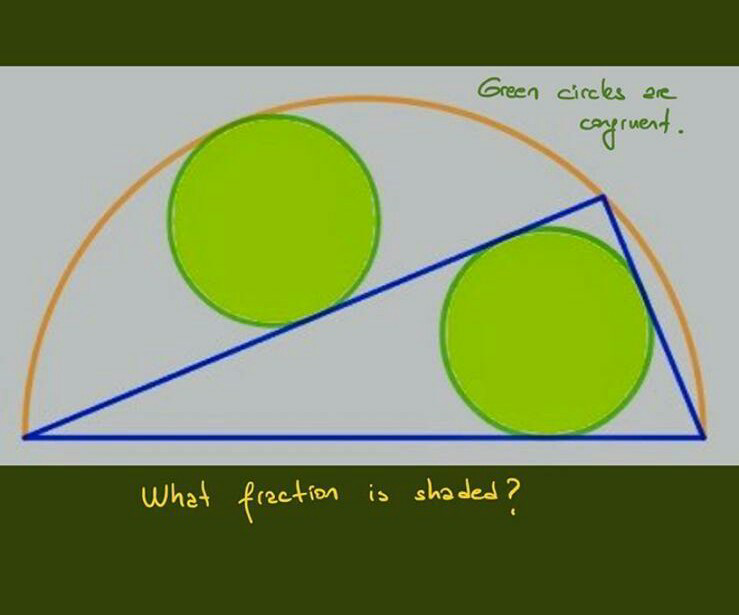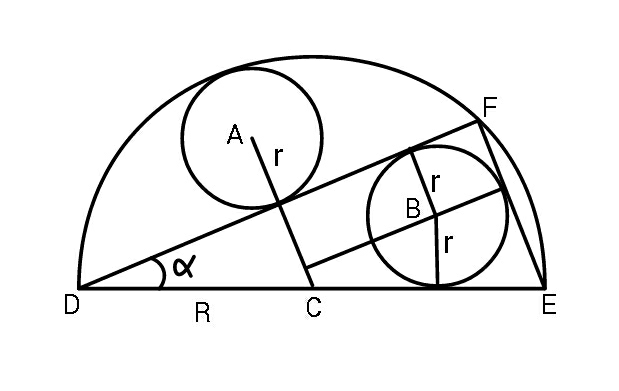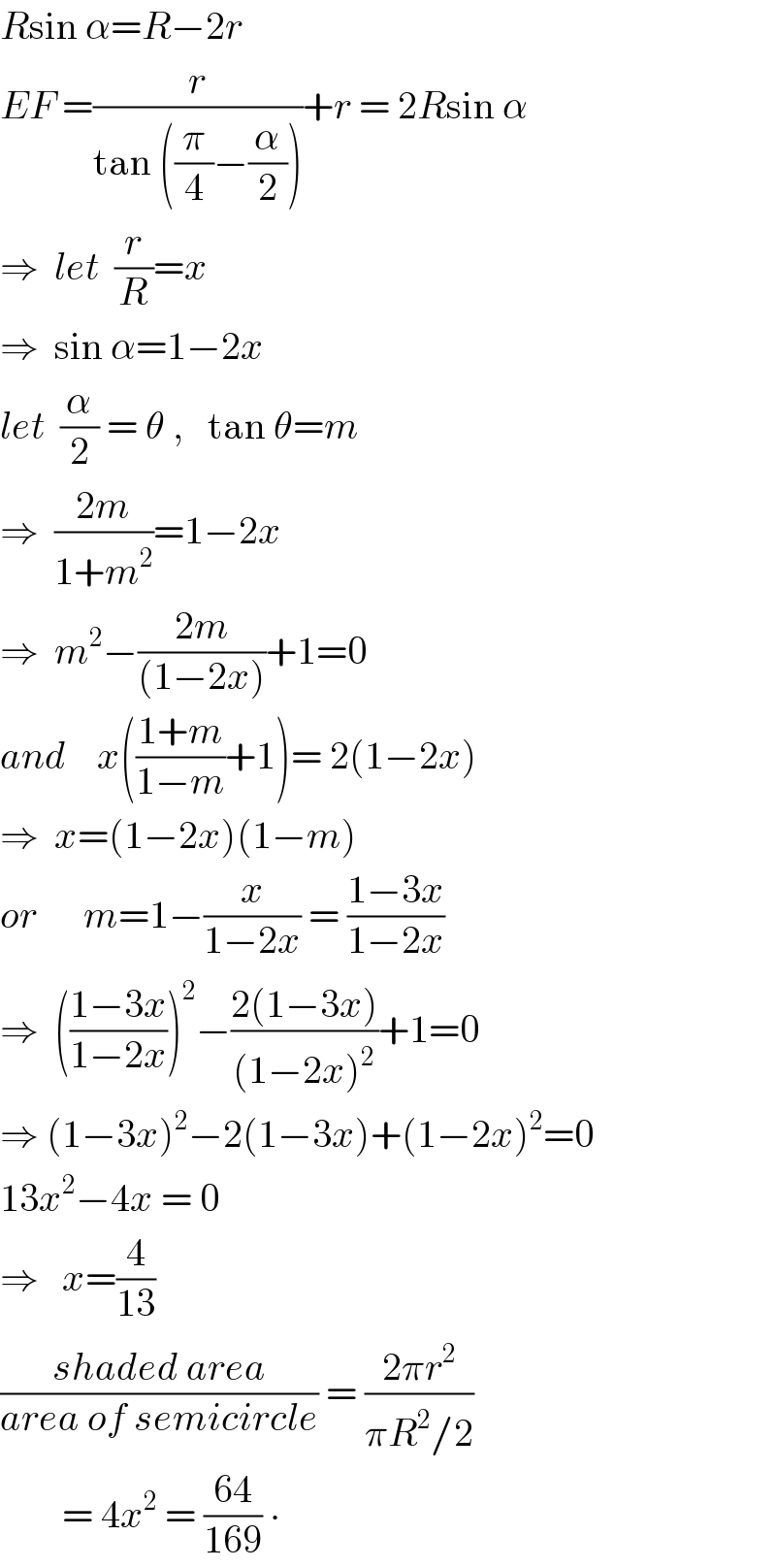
Question Number 72930 by TawaTawa last updated on 05/Nov/19

Answered by ajfour last updated on 05/Nov/19

Commented by ajfour last updated on 05/Nov/19

$${R}\mathrm{sin}\:\alpha={R}−\mathrm{2}{r} \\ $$$${EF}\:=\frac{{r}}{\mathrm{tan}\:\left(\frac{\pi}{\mathrm{4}}−\frac{\alpha}{\mathrm{2}}\right)}+{r}\:=\:\mathrm{2}{R}\mathrm{sin}\:\alpha \\ $$$$\Rightarrow\:\:{let}\:\:\frac{{r}}{{R}}={x} \\ $$$$\Rightarrow\:\:\mathrm{sin}\:\alpha=\mathrm{1}−\mathrm{2}{x}\: \\ $$$${let}\:\:\frac{\alpha}{\mathrm{2}}\:=\:\theta\:,\:\:\:\mathrm{tan}\:\theta={m} \\ $$$$\Rightarrow\:\:\frac{\mathrm{2}{m}}{\mathrm{1}+{m}^{\mathrm{2}} }=\mathrm{1}−\mathrm{2}{x} \\ $$$$\Rightarrow\:\:{m}^{\mathrm{2}} −\frac{\mathrm{2}{m}}{\left(\mathrm{1}−\mathrm{2}{x}\right)}+\mathrm{1}=\mathrm{0} \\ $$$${and}\:\:\:\:{x}\left(\frac{\mathrm{1}+{m}}{\mathrm{1}−{m}}+\mathrm{1}\right)=\:\mathrm{2}\left(\mathrm{1}−\mathrm{2}{x}\right) \\ $$$$\Rightarrow\:\:{x}=\left(\mathrm{1}−\mathrm{2}{x}\right)\left(\mathrm{1}−{m}\right) \\ $$$${or}\:\:\:\:\:\:{m}=\mathrm{1}−\frac{{x}}{\mathrm{1}−\mathrm{2}{x}}\:=\:\frac{\mathrm{1}−\mathrm{3}{x}}{\mathrm{1}−\mathrm{2}{x}} \\ $$$$\Rightarrow\:\:\left(\frac{\mathrm{1}−\mathrm{3}{x}}{\mathrm{1}−\mathrm{2}{x}}\right)^{\mathrm{2}} −\frac{\mathrm{2}\left(\mathrm{1}−\mathrm{3}{x}\right)}{\left(\mathrm{1}−\mathrm{2}{x}\right)^{\mathrm{2}} }+\mathrm{1}=\mathrm{0} \\ $$$$\Rightarrow\:\left(\mathrm{1}−\mathrm{3}{x}\right)^{\mathrm{2}} −\mathrm{2}\left(\mathrm{1}−\mathrm{3}{x}\right)+\left(\mathrm{1}−\mathrm{2}{x}\right)^{\mathrm{2}} =\mathrm{0} \\ $$$$\mathrm{13}{x}^{\mathrm{2}} −\mathrm{4}{x}\:=\:\mathrm{0} \\ $$$$\Rightarrow\:\:\:{x}=\frac{\mathrm{4}}{\mathrm{13}}\: \\ $$$$\frac{{shaded}\:{area}}{{area}\:{of}\:{semicircle}}\:=\:\frac{\mathrm{2}\pi{r}^{\mathrm{2}} }{\pi{R}^{\mathrm{2}} /\mathrm{2}}\: \\ $$$$\:\:\:\:\:\:\:\:=\:\mathrm{4}{x}^{\mathrm{2}} \:=\:\frac{\mathrm{64}}{\mathrm{169}}\:\centerdot \\ $$
Commented by TawaTawa last updated on 05/Nov/19

$$\mathrm{God}\:\mathrm{bless}\:\mathrm{you}\:\mathrm{sir}.\:\mathrm{Thanks}\:\mathrm{for}\:\mathrm{your}\:\mathrm{time} \\ $$
